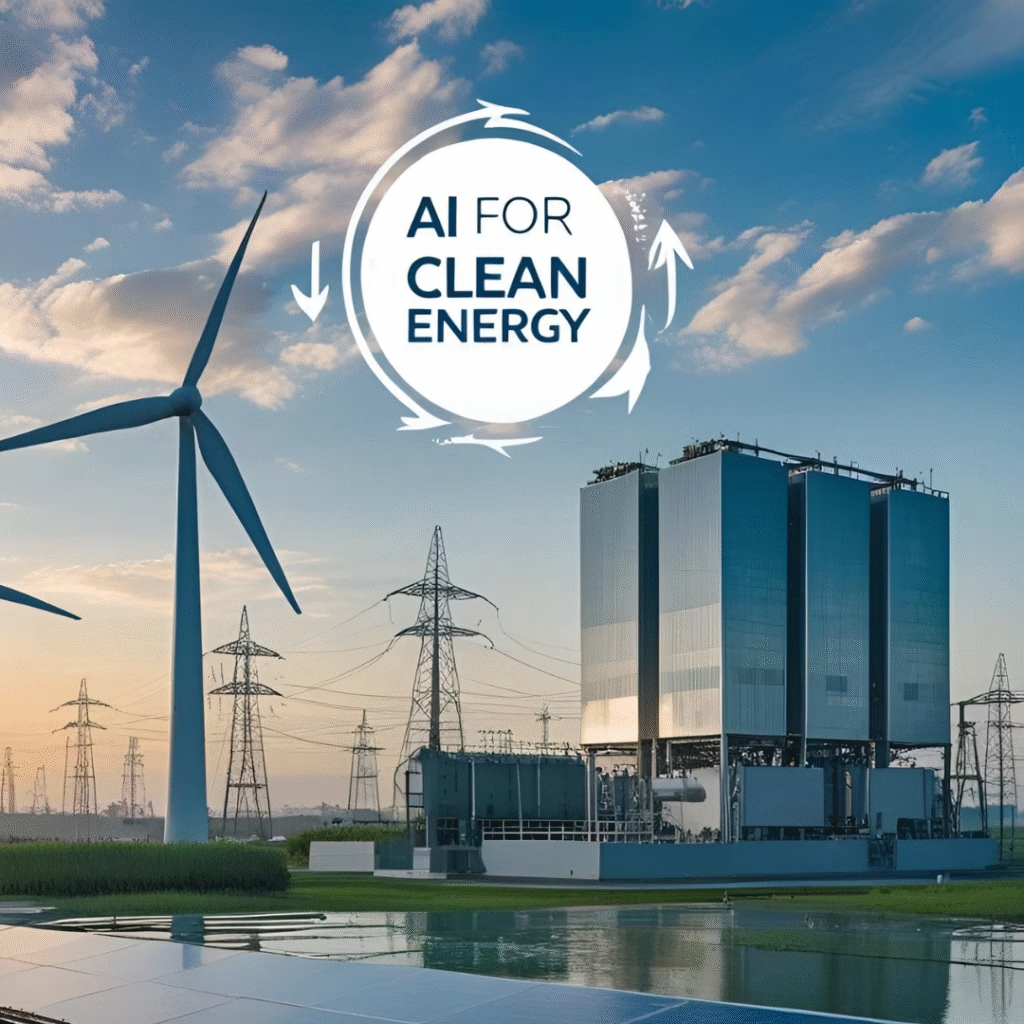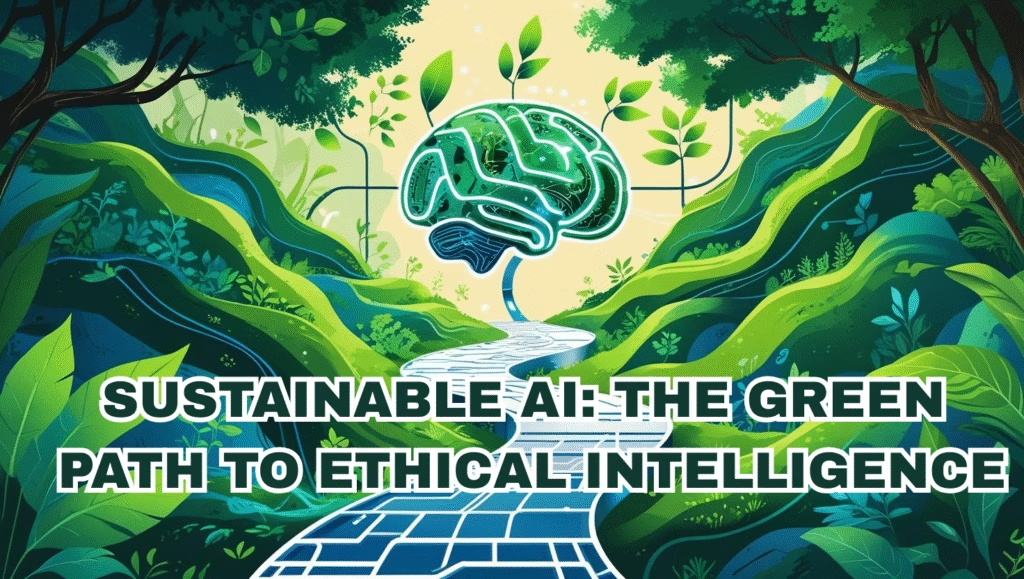AI for Clean Energy: Powering a Greener Future with Smarter Grids
As the world races to address climate change and rising energy demands, the need for cleaner, smarter, and more resilient energy systems has never been greater. Artificial Intelligence (AI) is emerging as a game-changer reshaping how we generate, distribute, and consume energy. From optimizing solar and wind farms to boosting grid stability and slashing carbon emissions, AI is powering a greener future with smarter grids.
Why Clean Energy Needs AI Now
The clean energy revolution is in full swing, with renewables projected to grow rapidly over the next decade. Yet, integrating vast amounts of solar, wind, and other renewables into existing grids presents complex challenges: unpredictable weather, fluctuating demand, and the need for real-time balancing. Traditional systems struggle to keep up.
AI steps in as the ultimate problem-solver analyzing massive data streams, predicting trends, and automating decisions faster and more accurately than any human or conventional software could. The result? Cleaner, more reliable energy for everyone. For a deeper dive, check out the IEA Energy and AI Report, April 2025.
How AI is Transforming Smart Grids
1. Forecasting Renewable Energy Production
One of the biggest hurdles for renewables is variability cloudy days, calm winds, and sudden demand spikes. AI-powered forecasting models process real-time and historical weather, grid, and market data to predict solar and wind output with remarkable precision. This allows grid operators to anticipate fluctuations, optimize storage, and minimize waste.
Real-World Example:
Google’s DeepMind applied AI to its own solar farms, boosting energy output by 20% through smarter forecasting and panel orientation.
2. Grid Management and Dynamic Balancing
AI enables dynamic load balancing matching supply and demand in real time to prevent blackouts and reduce curtailment (wasted renewable energy). Machine learning algorithms can instantly reroute power, adjust storage, and even automate demand response programs for homes and businesses.
Case Study:
EQuota Energy uses AI-driven analytics to optimize grid stability, manage energy-intensive manufacturing, and cut carbon emissions for utilities across Asia.
3. Predictive Maintenance and Asset Optimization
Wind turbines, solar panels, and batteries are expensive assets. AI-powered predictive maintenance monitors sensor data, detects early signs of wear or failure, and schedules repairs before breakdowns occur reducing downtime by up to 70% and extending equipment lifespan.
Industry Leader:
Vestas deploys AI to analyze vibration and temperature data, optimizing turbine performance and slashing maintenance costs.
4. Energy Storage and Demand Flexibility
AI helps utilities decide when to charge or discharge batteries, shift loads, or tap into distributed energy resources like rooftop solar and electric vehicles. These “smart grid” capabilities make renewables more reliable and help balance the grid during peak times.
The Benefits: Efficiency, Savings, and Sustainability
- Increased Efficiency: AI automates complex decisions, ensuring energy is produced, stored, and delivered with minimal waste.
- Cost Savings: Predictive analytics reduce operational expenses, extend asset life, and lower repair costs for utilities and consumers.
- Carbon Reduction: AI-optimized systems can cut emissions by up to 50% compared to traditional methods, accelerating the path to net zero.
- Grid Resilience: Smarter grids powered by AI are better equipped to handle extreme weather, cyber threats, and fluctuating demand.
For more on these benefits, see the Acropolium: AI in Renewable Energy Guide.
Real-World Innovations in Action
| Company/Project | AI Application | Impact |
|---|---|---|
| Google DeepMind | Solar forecasting & optimization | 20% boost in solar farm efficiency |
| EQuota Energy | Grid analytics & carbon management | Enhanced stability, lower emissions |
| Vestas | Predictive wind turbine maintenance | Lower costs, less downtime |
| Microsoft AI for Earth | Emission reduction projects | Data-driven sustainability |
Challenges: The Other Side of the Coin
No technology is perfect, and AI is no exception. As we embrace AI for clean energy, several challenges need careful attention:
- AI’s Own Energy Footprint: Training and running large AI models can be energy-intensive, sometimes offsetting the very gains they enable.
- Governance and Regulation: With rapid innovation comes the need for robust policies to ensure ethical use, data privacy, and equitable access.
- Data Privacy: AI systems rely on vast amounts of data, raising concerns about who owns and controls this information.
- Integration Complexity: AI works best when paired with modern infrastructure and transparent data sharing no easy feat for legacy grids.
Explore these challenges further in the Yale Clean Energy Forum: The Power of AI in Clean Energy.
Actionable Steps for Stakeholders
For Policymakers:
- Develop clear, justice-centered regulations for AI in energy, focusing on transparency, privacy, and sustainability.
- Incentivize research into energy-efficient AI and support pilot projects that demonstrate real-world benefits.
For Utilities and Grid Operators:
- Invest in AI-driven forecasting, predictive maintenance, and demand response systems to enhance reliability and cut costs.
- Foster partnerships with tech companies and research institutions to stay ahead of the innovation curve.
For Businesses and Innovators:
- Adopt AI-powered energy management tools to optimize consumption and reduce carbon footprints.
- Prioritize open data standards and interoperability to maximize the value of AI across the energy ecosystem.
The Road Ahead: A Vision for Sustainable AI in Clean Energy
The future of energy is smart, green, and powered by AI. As the technology matures, its potential to accelerate the clean energy transition is undeniable. Imagine a world where grids self-heal after storms, renewables power entire cities around the clock, and every watt is tracked, optimized, and delivered with minimal waste.
But this future isn’t guaranteed. It requires collaboration between governments, industry, and communities to ensure AI is used responsibly, ethically, and sustainably. By investing in research, updating regulations, and sharing data openly, we can unlock the full promise of AI for clean energy.
For ongoing updates and expert insights, follow Renewable Watch: Energy and AI.
Call to Action
Let’s make the most of this historic opportunity. Whether you’re a policymaker, utility manager, business leader, or concerned citizen, your voice matters. Advocate for responsible AI, support clean energy innovation, and demand transparency from those deploying these powerful tools. Together, we can power a greener, smarter, and more equitable future for all.
Keywords: AI for clean energy, smarter grids, renewable energy AI, energy forecasting, grid optimization, sustainable energy, AI in solar, AI in wind, energy efficiency, carbon reduction, green technology, predictive maintenance, smart grid, AI governance, future of energy
Disclaimer: Transparency is important to us! This blog post was generated with the help of an AI writing tool. Our team has carefully reviewed and fact-checked the content to ensure it meets our standards for accuracy and helpfulness. We believe in the power of AI to enhance content creation, but human oversight is essential.





